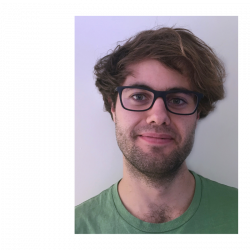 Hi! I am a Ph.D. student in Fred Hamprecht's Image Analysis and Learning lab at Heidelberg University. My research interests include computer vision, image segmentation, deep learning, and clustering algorithms, with a focus on their application to automated reconstruction of neural circuit connectivity. For more details, please contact me by email (firstname.lastname AT iwr.uni-heidelberg.de)
Hi! I am a Ph.D. student in Fred Hamprecht's Image Analysis and Learning lab at Heidelberg University. My research interests include computer vision, image segmentation, deep learning, and clustering algorithms, with a focus on their application to automated reconstruction of neural circuit connectivity. For more details, please contact me by email (firstname.lastname AT iwr.uni-heidelberg.de)
In my free time, I like to focus on climate activism and spend time in nature. Among my hobbies, there are yoga, swimming, playing piano, and photography.
Current and Past Projects
GASP (Generalized Algorithm for Signed graph Partitioning)
GASP is a new theoretical framework that generalizes algorithms for hierarchical agglomerative clustering to weighted graphs with both attractive and repulsive interactions between the nodes. This framework allows us to explore many combinations of different linkage criteria and cannot-link constraints. We prove the equivalence of existing clustering methods to some of those combinations and introduce new algorithms for combinations that have not been studied before.
--> Link to the paper
Proposal-free 3D instance segmentation
I recently worked on a new proposal-free instance segmentation method that builds on single-instance segmentation masks predicted across the entire image in a sliding window style. In contrast to related approaches, this method concurrently predicts all masks, one for each pixel, and thus resolves any conflict jointly across the entire image. The result is a parameter-free method that is strongly robust to noise and prioritizes predictions with the highest consensus across overlapping masks. Moreover, all masks are decoded from a low dimensional latent representation, which results in great memory savings strictly required for applications to large volumetric images.
--> Link to the paper
The Mutex Watershed and its Objective
Image partitioning is the task of decomposing an image into distinct segments, or equivalently to detect closed contours. Recently, in our lab, we proposed an efficient algorithm for graph partitioning, called the Mutex Watershed. Unlike seeded watershed, the algorithm can accommodate not only attractive but also repulsive cues, allowing it to find a previously unspecifiednumber of segments without the need for explicit seeds or a tunable threshold. It can be also proven that this simple algorithm solves to global optimality an objective function that is intimately related to the multicut / correlation clustering integer linear programming formulation. The algorithm is deterministic, very simple to implement, and has empirically linearithmic complexity.
--> Link to the paper
Application: Neuron segmentation
In my Ph.D. program, I mostly focused on the task of neuron segmentation in electron microscopy (EM) image volumes. This application is of key interest in connectomics, a field of neuroscience with the goal of reconstructing neural wiring diagrams spanning complete central nervous systems. Currently, only proof-reading or manual tracing yields sufficient accuracy for correct circuit reconstruction, thus further progress is required in automated reconstruction methods.
For more details about the data, see the following resources:
- The Hemibrain Connectome (see data in the viewer)
- CREMI 2016 EM Segmentation Challenge: currently the neuron segmentation challenge with the largest amount of training data available
Publications and contact
See the list of my publications here
Email: firstname.lastname AT iwr.uni-heidelberg.de
Ph.D. student in the Image Analysis and Learning (IAL) lab
Heidelberg Collaboratory for Image Processing (HCI)
Interdisciplinary Center for Scientific Computing (IWR)
Heidelberg University
Im Neuenheimer Feld 205, Room 04.328
69120 Heidelberg


